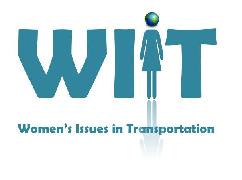 |
5th International Conference on Women's Issues in Transportation - Bridging the Gap
14-16 Apr 2014 Paris - La Défense (France)
|
Scientific program > Topics to considerThe information on this page is meant to provide some ideas on issues that would be relevant to the conference. This isn’t meant to be exhaustive, only suggestive of some of the topics and factors that are important when considering women’s issues in transportation.Please consider submitting an abstract/paper associated with these topics or with something unique but important to insuring women’s needs as transportation system users and decision-makers are met. Women as transportation system usersWomen as travelers and customers in the transport system sometimes have different transport demand, behavior, needs, interests, values, ability and willingness to pay. Women have different physical characteristics. The transport system should account for these differences to ensure safety, comfort, etc for women transportation users. Women may respond differently to policy. These policies may include incentives such as congestion, fuel consumption, and parking, or safety legislation such as drink & drive, speed limits, and usage of safety belts. Women have different activity and travel patterns, allocate time differently, and approach the use of communication technologies such as internet, email, social networks, etc. differently. Women’s valuesWomen’s values of time, traffic safety, the environment, road maintenance and design of public transport terminals and stations sometimes differ. Women’s ability to adapt to change and innovateInnovation is a key factor in development, including within the transport sector. Women’s perspective and response to innovation differ as does their ability to adapt to a changing economic environment. Women in the decision-making processesWomen in decision-making processes: How do women make transportation and policy decisions and based on what premises? How are women represented in decision making process at the family, societal and policy levels? Factors to Consider – How do these factors impact women differently?- Lifecycle patterns: young/child, singled, married, parent with young children (single or married), parent with older children, older couple, older single. - Household responsibilities/constraints: caring for children, grocery shopping, service trips, etc. - Socio-economic factors: occupation full or part time, income, level of education, car ownership, driver licensing. - Land use characteristics / Travel patterns: working place location with respect to household location, availability and level of service of transport systems to serve various geographic area types (urban, rural, etc). - Information and Communication Technologies (ICT) accessibility: penetration of ICT, availability and adoption of tele-activities (such as tele-working, tele-shopping, e-learning), etc. |
| Online user: 1 | RSS Feed |

|
